Auditory Milestones: From Birth to 2 Years

Before we get down with our auditory milestones series, here are some very important statistics for you.
- Did you know that according to the World Health Organization, by the year 2050, almost 2.5 billion people may face some degree of hearing-related issues and hearing loss? Consequently, they may even require some form of hearing rehabilitation?
- Did you know that 34 million children alone need auditory habilitation due to their hearing loss?
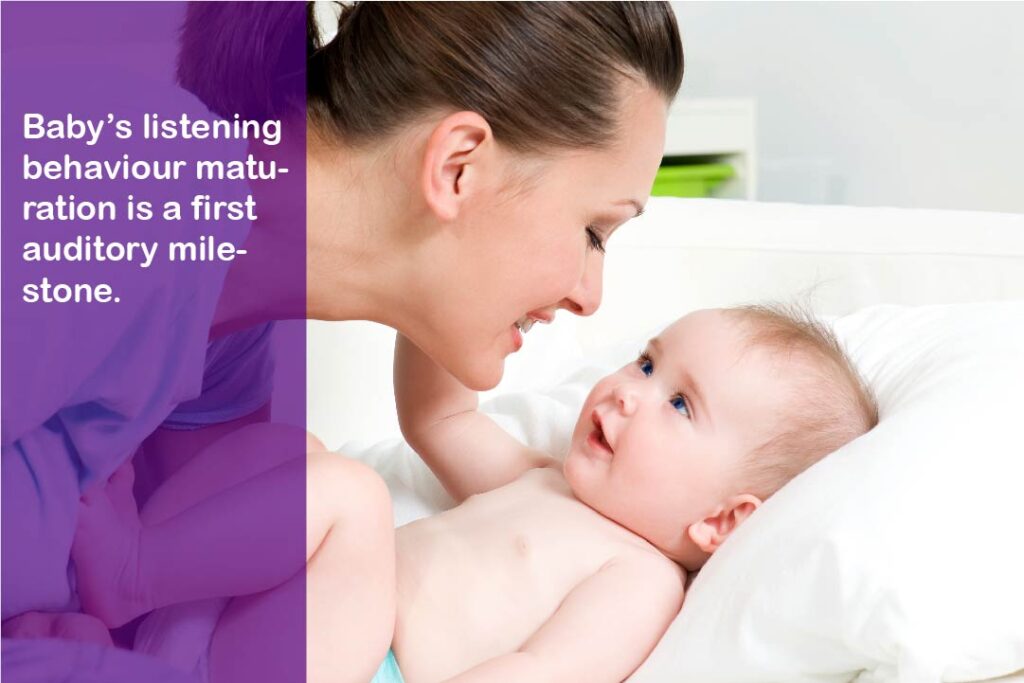
What are pediatric auditory milestones?
Auditory milestones are the baby’s behavioral responses to sounds. And it develops and matures with the child’s physical and intellectual growth. These behaviors may correspond to a child’s cognitive maturation with age. These auditory responses build receptive language.
So here we go on our discovery of pediatric auditory milestones
The fetus starts hearing in the mother’s womb around 18 weeks of development. Ears’ structure is developed by 24 weeks of pregnancy. Inevitably, the newborn has exposed to the sound long before his birth. Below we present to you auditory milestones from 3 months to age two years old.
Pediatric Auditory Milestones: From birth to 3 months
| Hearing and auditory skills | Talking skills | |
| Firstly your child may react when presented with loud sounds through a startle reflex. | Consequently, the baby can also indulge in cooing sounds now. | |
| Secondly, the baby may quiet, even soothed by the presentation of soft sounds. | Accordingly, the infant can change his crying tones for a variety of his needs. | |
| Moreover, when you speak to her/him, s/he may turn his head towards you. | Necessarily, the smile to the newborn also contributes to his auditory-verbal skills development and maturation because it builds a social connection between you and your child. |
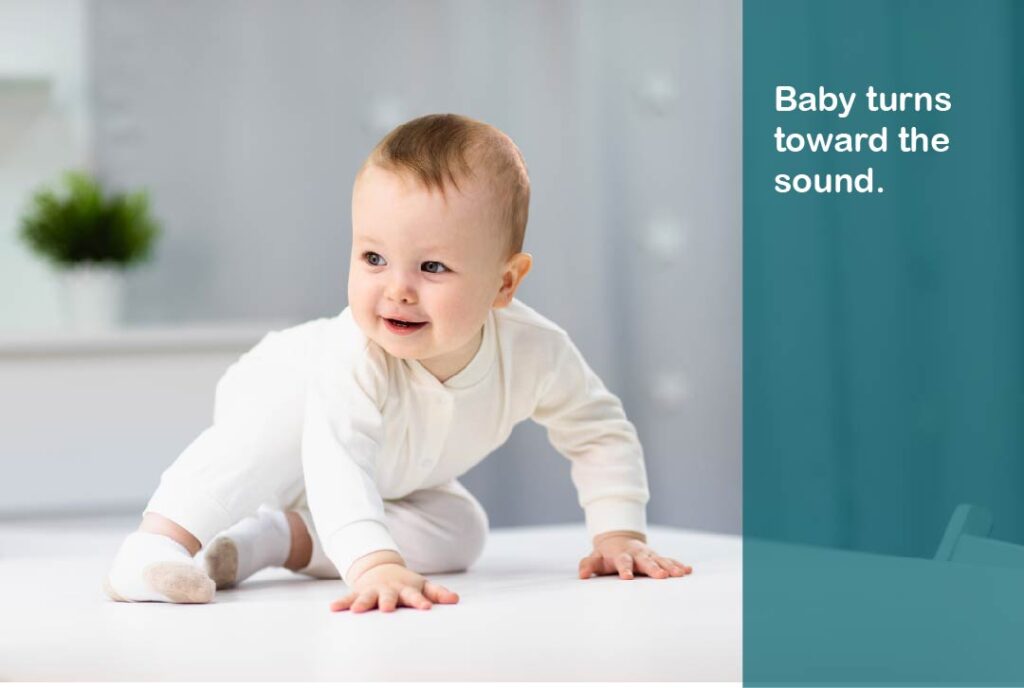
Overall, by the 3 months of a baby’s auditory skills maturation, an infant may awake by loud sounds and voices.
However, by that time, s/he learns to smiles at you when he/she is spoken to. Also, the baby recognizes your voice, and your presence makes her/him calm down.
Pediatric Auditory Milestones: From 3 to 6 Months
| Hearing and auditory skills | Talking skills |
| Firstly he turns or looks towards a new sound | subsequently, the child learns babbles or coos to interact while playing with you or by him/herself |
| Secondly, he seems also to recognize the voice tone changes of his parents. | As a result, his babbling seems more speech-like at this stage. Additionally, these sounds include utterances of syllables like ba, da, and mi. |
| Furthermore, your child now laughs and giggles in response to interaction. Congratulation, your baby is showing the sign of social cognitive development. | |
| Moreover, he may imitate after your action. | Over all by making sounds, he informs you if he/she is happy or upset. |
| Lastly, a loud voice or noise may scare him. | Initiates repeating sounds through vocalization and babbling(aah, ooh, and ba-ba, ma-ma. He is building his phonological repertories with all passing days. |
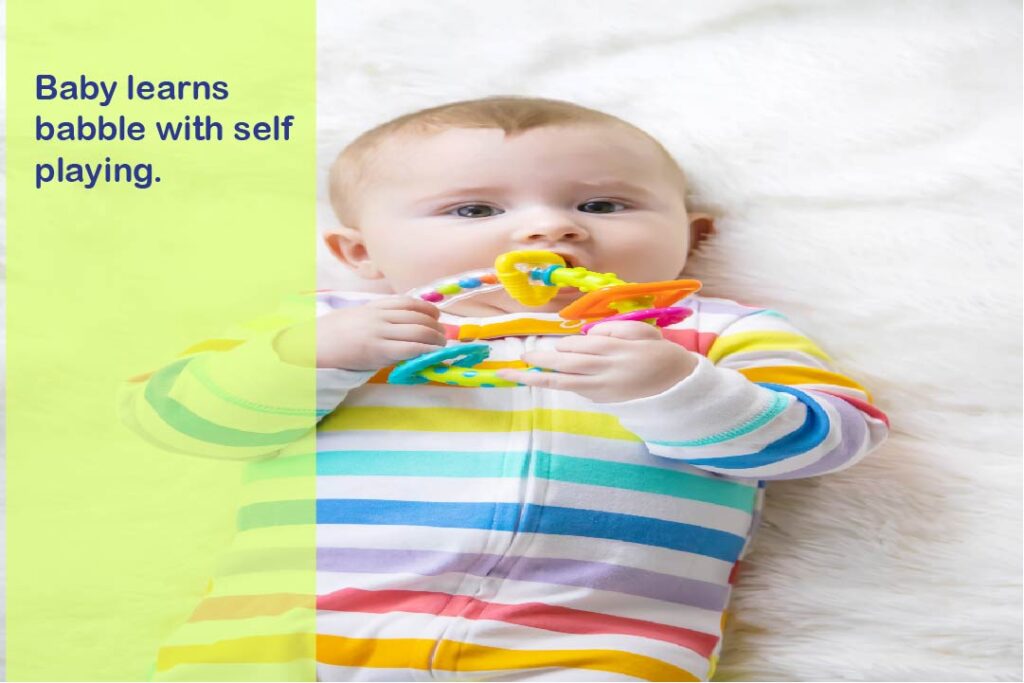
Pediatric Auditory Milestones: From 7 to 12 months
| Hearing and auditory skills | Talking skills |
| Firstly a 7-month-old baby may respond when his/her name is called. Furthermore, he may run to pick up the ringing telephone. Even more, he may even respond to someone’s soft voice, | Babbling along certain sound strings emerge with more confident utterances “up-up,mimi babababa,mamaaamaaama |
| Secondly, s/he may know some common nouns, including cup, phone, glass, shoe, and may even say hi, bye-bye, give, etc. | To gain and maintain attention, uses gestures and sounds. |
| Next your baby babbles even when s/he is alone | When shown, objects point towards them to lead others. |
| Now the child may respond to your requests such as come, give and go there. | Additionally, your baby now gestures to communicate like waving bye, hi. Furthermore, now he reaches for things up or down and nods his head for ‘no.’ |
| Lastly, your child may look at pictures of things or when hears someone refers to them. | Moreover, your baby independently imitates various speech sounds. |
| consequently, an infant utters 1 or 2 words with slight intelligibility, like hello, mama, or uh-oo, at the time of his first birthday, |
also see about joint attention: http://terteeb.org/blog/2021/05/24/joint-attention-an-important-tool-for-communication-cognition-development/
Pediatric Auditory Milestones: Red Flags
- The baby does not turn his head towards noises.
- The baby does not wake up when TV is on at a loud level.
- You need to check if the baby can hear properly. See the audiologist to rule out hearing impairment. Furthermore, you need to focus on any ear infections and consult your physician.
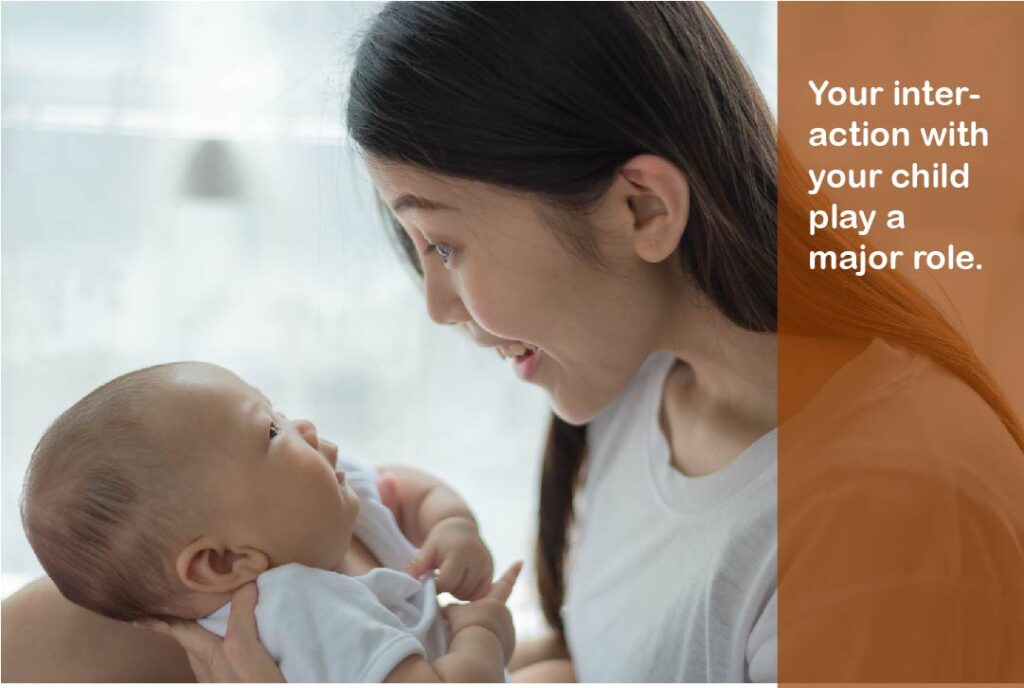
Home Activities to Develop Auditory and Listening Skills (Birth -1 year)
There are some activities that facilitate listening skills in your baby.
- Respond to your child’s cry. In other words, by looking at him as he/she is busy making noises.
- You can talk to him and see if he pays attention, then You and your baby can take a turn in babbling.
- You can also teach your baby to imitate your actions and gestures.
- Games such as peek-a-boo, blowing kisses, clapping enhance communication skills.
- Talk to the baby as you bathe him/ her.
- Feeding time is an excellent opportunity for you to interact with your baby.
- Since talking increases baby’s communication skills, so you can use phrases such as” mom is going to brush your hair, or mom is going to make your milk, etc..”
- Additionally, while communicating, please make sure to take your child’s name, so he feels important.
- Talk to your child about where you are going, everything that you are doing there, and who and whatever you see there. “Like mom and baby are going to park, we will have fun there. We will see birds, etc.”.
- You can enhance auditory and verbal skills by teaching animal sounds like “lion goes roar, the duck says quack.”
- Additionally, reading daily to your baby develops listening and verbal skills in your child.
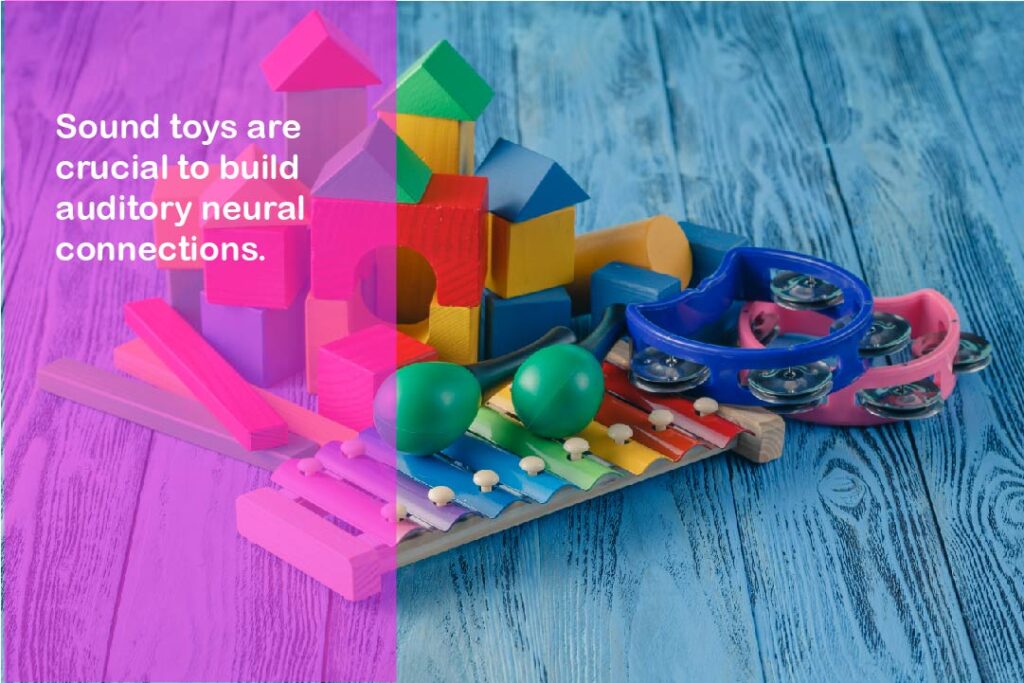
Pediatric Auditory Milestones: From 1 to 2 years
| Hearing and auditory skills | Talking skills | |
| Firstly, your child can point to a few body parts when asked to. | Consequently, the child can now use a variety of new words. | |
| Secondly, your child can now follow commands such as “pick up the ball” or “Kiss the teddy.” | Furthermore, his speech now includes /b,m,h,p, and w/ in his words. | |
| Thirdly, at this stage, your child may answer your simple questions, such as “Where’s your ball?” or “Who’s that?” | Most importantly, he/she names pictures in books. | |
| Above all your little one may now enjoy listening to short stories, nursery rhymes, and songs | In addition, to this, your child may be able to ask you simple WH questions, for example, “Who’s that?”, “What’s that?” and “Where’s doggy?” | |
| As a result of you naming a picture in a book during story time, your child points to the exact pictures. | Furthermore, your one-year-old child may make a 2-word phrase such as”more milk,” “no food,” and “mommy ball.” | |
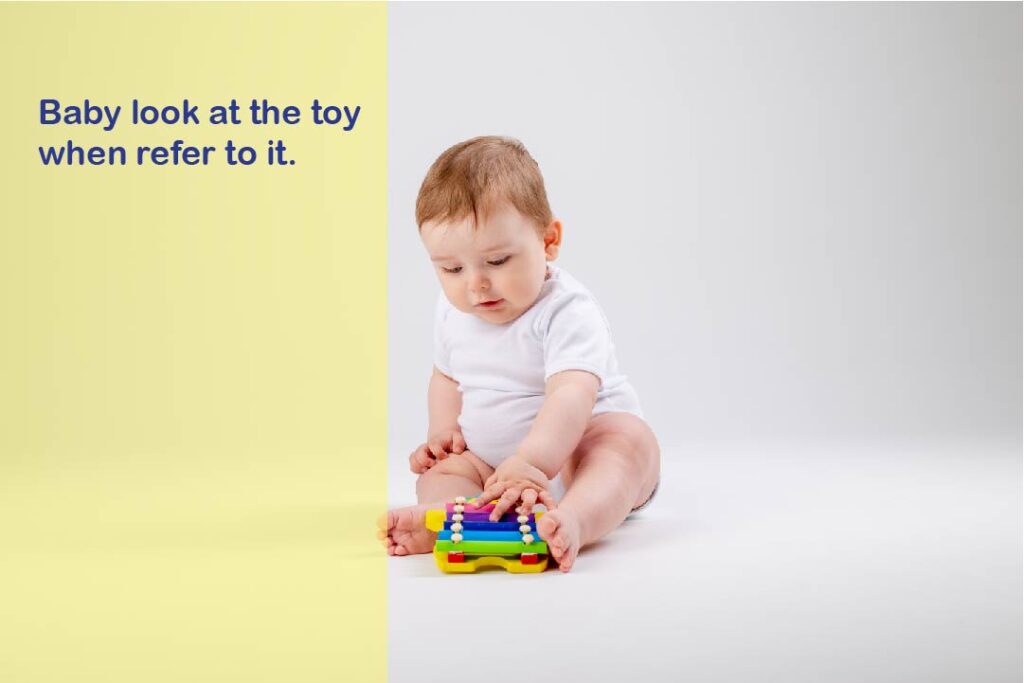
Home Activities to Develop Auditory and Listening Skills
(1 -2 years)
- Firstly, you may talk to your child while doing house chores or running errands like the grocery store. In other words, while shopping or taking a walk, point towards what you see, name it. For example, if you see a cat, you can say, “I see a cat. The cat says ‘meow.’ it’s a big cat. This cat is black.”
- Secondly, you can use short words and sentences that your child can imitate. In addition to this, you need to use correct grammar.
- Thirdly it is highly recommended that you talk about the different sounds heard around your house.
- In other words, when you listen to the tick of the clock, you can imitate the clock with a tick, “t-t-t.” utterance.
- You can also play with a variety of sounds during bath time. You need to be at eye level with your baby. Have fun blowing bubbles while making the “b-b-b-b” sound. Pop the bubbles making a “p-p-p-p” sound. While playing with toy engines, you both can make the “rrr-rrr-rrr” sound.
- Increase your child’s vocabulary through his auditory skills. If the child says “car,” that is a small blue car.”
- Moreover, you can read to your child daily.
- The larger the books, the better the results.
- Furthermore, while reading, you can also talk about all the pictures on every page, every detail with great excitement.
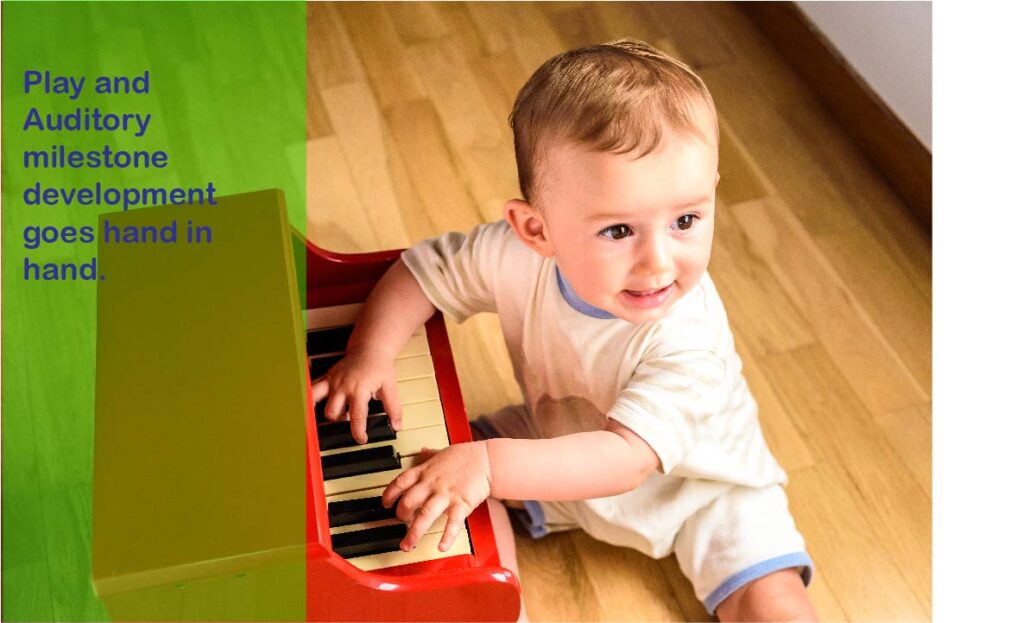
Conclusion:
We hope that our activities are fruitful for you. Try them out at home and do let us know of any issues you may be facing while practicing them. One of the most important things to remember is that during these activities you need to be very consistent in your practices.
References:
https://www.asha.org/public/speech/development/01/
Capute, A. J., & Accardo, P. J. (1978). Linguistic and auditory milestones during the first two years of life: a language inventory for the practitioner. Clinical pediatrics, 17(11), 847-853.
McMahon, E., Wintermark, P., & Lahav, A. (2012). Auditory brain development in premature infants: the importance of early experience. Annals of the New York Academy of Sciences, 1252(1), 17-24.
Datta, G., Odell, A., & Durbin, K. (2010). Nottingham auditory milestones: a profile to monitor the growth of active listening, understanding, auditory memory, and sequencing in babies and young children in the first three years after receiving cochlear implants. Cochlear implants international, 11(sup1), 282-285.


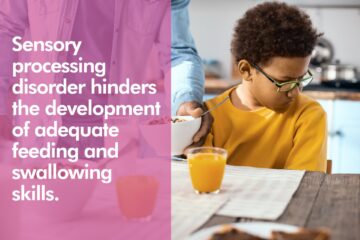
0 Comments